What's New
Displaying results 3201 - 3210 of 4052
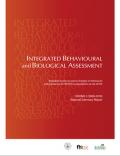
Resource | Publications,
The Integrated Behavioural and Biological Assessment is a significant component of the overall evaluation strategy of the Avahan programme. The first round of the IBBA was conducted between 2005 and 2007 and the second round between 2009 and 2010 in the six high prevalence states of India among FSW and their clients, high-risk MSM, transgender, IDU, and truckers.
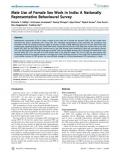
Resource | Publications,
Heterosexual transmission of HIV in India is driven by the male use of female sex workers (FSW), but few studies have examined the factors associated with using FSW. This nationally representative study examined the prevalence and correlates of FSW use among 31,040 men aged 15–49 years in India in 2006. Nationally, about 4% of men used FSW in the previous year, representing about 8.5 million FSW clients.
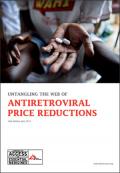
Resource | Publications,
New data adds to a growing body of evidence that as well as saving lives, treating HIV can also help prevent HIV transmission, making the scale-up of treatment all the more urgent. In May 2011, a study called HPTN 052 supported by the US National Institutes of Health found a 96% reduction in transmission when HIV-positive persons in a relationship with an HIV-negative person were started early on antiretroviral therapy compared to people whose treatment was deferred.9 Early treatment also significantly reduced the development of tuberculosis, which remains the number one killer of people living with HIV/AIDS.
If HIV treatment and prevention interventions are ambitiously expanded, according to UNAIDS, twelve million infections and more than seven million deaths can be averted by 2020. The number of new infections could be reduced by more than half by 2015.
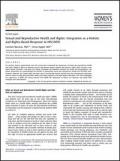
Resource | Publications,
For decades, donors, governments, and civil society have recognized the importance of sexual and reproductive health and rights (SRHR) in efforts to alleviate poverty and advance gender equality and women’s rights. More recently, in the battle against HIV/AIDS and given the unique challenges the pandemic presents for health and development--the global community has acknowledged the benefits of synergizing sexual and reproductive health and HIV/AIDS interventions. However, the United States has been slow to incorporate lessons learned from the international experience when it comes to integrating HIV/AIDS, SRHR, and gender equality in the fight against HIV/AIDS. This article highlights the importance of SRHR and lessons learned from SRHR–HIV integration to inform U.S. domestic and global AIDS strategies and interventions.
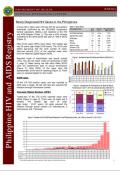
Resource | Fact Sheets,
In June 2011, there were 178 new HIV Ab seropositive individuals confirmed by the STD/AIDS Cooperative Central Laboratory (SACCL) and reported to the HIV and AIDS Registry (Table 1). This was a 63% increase compared to the same period last year (n=109 in 2010) [Figure 1].
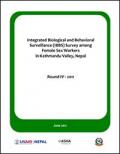
Resource | Publications,
This is the fourth round of the IBBS survey conducted among 593 Female Sex Workers (FSWs) - of whom 355 were establishment-based and 238 street-based. The survey covered the entire Kathmandu Valley, including the Kathmandu, Bhaktapur, and Lalitpur districts. The fieldwork for the survey was carried out from January 16 to March 6, 2011.
The survey was undertaken primarily to track the trend of HIV infection and syphilis in FSWs and to understand sexual behaviors among FSWs in the Kathmandu Valley. Information on the socio-demographic, sexual behavior, pregnancy history and use of family planning devices, drug use and exposure to STI/HIV/AIDS awareness programs was collected through a structured questionnaire, while the prevalence of HIV and syphilis was tested via blood samples.
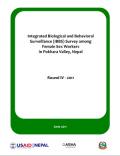
Resource | Publications,
This is the fourth round of the IBBS conducted among the Female Sex Workers (FSWs) of Pokhara Valley. The survey covered the urban and sub-urban locations falling within the valley of Pokhara. The fieldwork for the survey was carried out from January 16 to March 17, 2011.
The survey was undertaken primarily to track the trend of HIV infection and syphilis in FSWs and to assess the sexual behaviors among FSWs in the valley. Information on the demographic, sexual behavior and exposure to STI/HIV/AIDS awareness programs were collected through a structured questionnaire while the prevalence of HIV and syphilis were tested via blood samples.
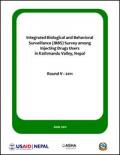
Resource | Publications,
This report details the findings of the fifth round of the IBBS conducted among 340 male IDUs in the Kathmandu Valley, recruited using Respondent Driven Sampling (RDS). A structured questionnaire was administered to the respondents at a centrally located survey center. The questionnaire collected information on sexual behavior and HIV/AIDS awareness as well as socio-demographics. After the interview, clinical examinations were conducted by a Health Assistant and blood samples were collected for HIV and syphilis testing by a lab technician. The test results were provided in coordination with pre- and post-test counseling by a trained counselor in the survey center.
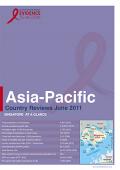
Resource | Reviews and Snapshots,
The first case of HIV in Singapore was diagnosed in 1985. Since then, the number of HIV cases has continued to grow - although still a low-level HIV epidemic - and by end 2009, the estimated number of people living with HIV was around 3,400 [2,500-4,00], up from 2,800 estimated in 2001 - or about a 21% increase.
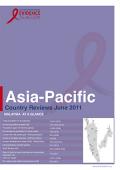
Resource | Reviews and Snapshots,
The first reported case of HIV in Malaysia was in 1986. In 2009, HIV prevalence was 0.5% among adults aged 15-49. As of December 2009, the Malaysian Ministry of Health reported a cumulative total of 87,710 HIV cases, and 15, 317 AIDS cases of AIDS and 13,394 AIDS-related deaths.





